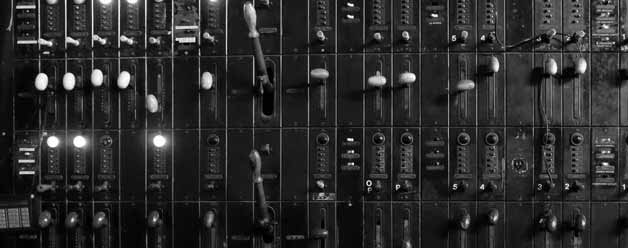Big Data & Traditional Data Systems
When it comes to managing and organizing data, a lot of traditional data systems have been the first and only way to do so. Even though there are a lot of storage houses and technologies exist, most of the data is found in the traditional storage systems. These types of traditional systems were firstly designed to work with data that is also known as structured data.
Structured data has many characteristics that set it apart from semi-structured and unstructured data. First of all, there are records in which there are clearly defined fields. There, the records are kept in tables. The fields in them have special names and relationships.

It is designed in a way that it draws the data from the disk and loads it into the form of a memory. Then, it processes it by various applications. However, this is not so efficient. That is because the data comes in huge formats that the traditional programs can’t process because they’re small.
Traditional data systems use SQL (Structured Query Language). They use this type of language to properly manage and access data. They also have relational and warehouse database systems that read the incoming data in 8-16k block sizes.
These 8 and 16k blocks sizes load the data into the form of memory. Then, various applications process that data. During that whole process of processing data, it can be difficult and inefficient to read the data in those blocks.
As technology has advanced, many organizations, now have to hold and store more data for longer periods of time. For example, storage volumes of many industries such as the financial sector and healthcare are increasing.
There are shared storage systems that have features such as striping and mirroring. That is why it is hard for IT companies to manage the size and cost of the data growth in these traditional systems.
Why Traditional Data Systems Have Problems Storing Big Data
When traditional systems were first designed, they were there to handle data that can be stored in tables and columns. Today, data comes in all kinds of forms and formats and can’t be stored in these systems.
First, the biggest problem is the cost of the storage systems. Traditional data systems are designed to use shared storage. This means that there is one storage that is shared with other computers or servers. This is a problem as it is a limited medium. This makes ingesting massive volumes of data impossible.
This shared storage is made up of extremely complicated silos of SA (System Administrators), Application Server Teams, DBAs, network and storage teams.
There is often a BDA for every 40-50 database servers. Anyone that is running these traditional systems will know that they will fail instantly.
The cost of the hardware is another problem many traditional servers face. Many hardware solutions can be limited when it comes to managing these large volumes of data. May enterprises spend thousands and millions of dollars to license their hardware of software all while supporting massive data environments.
They have to invest such enormous amounts of money as they have to handle the constantly increasing data. Many new technologies and software that allow the incoming data to grow in gigantic sizes are expensive.
As data is expensive to store and organize in these systems, it has to be filtered and aggregated. That means that a large percent of it has to be thrown out in order to make more storage room. This can be detrimental to many businesses. When data is minimized, it minimizes the accuracy and confidence of the results. But, this is not the only thing that is compromised. This also limits the organization/ company to identify trends and business opportunities. Microscopic data can gain and bring more insights than regular data.
There is another problem traditional databases face that makes them inefficient at handling large data. These traditional systems typically contain data warehouses and relational databases. The data in them is loaded from the shared storage medium somewhere in the datacenter. This means that the data first has to go over wires, cables and switches. They unfortunately have bandwidth limitations even before the programs can begin processing the data.
This makes it hard for them to handle data analytics as they process 10s and 1000s of terabytes. This exceeds the capability of the computational side of the traditional systems.
In order to successfully and efficiently leverage big data, organizations, companies and enterprises have to analyze that same data and make decisions based on it. And, in order to get the best of that incoming data, the results have to be valuable when analyzed.